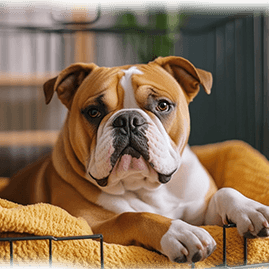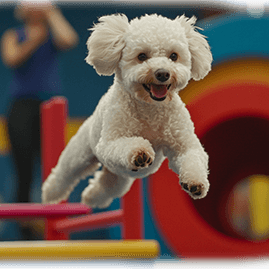Training a Golden Retriever: A Comprehensive Guide
Golden Retrievers are known for their intelligence, friendliness, and eagerness to please, which makes them highly trainable. However, like all dogs, they need proper guidance, patience, and consistency to become well-behaved companions. In this guide, we’ll dive into how to train a Golden Retriever, from basic obedience to more advanced commands, and provide tips and resources to ensure success.
Why Are Golden Retrievers So Trainable?
Golden Retrievers are one of the most popular breeds due to their temperament and intelligence. They were originally bred as working dogs, which means they have an inherent desire to follow commands and complete tasks. Their natural eagerness to please, combined with their gentle nature, makes them ideal candidates for positive reinforcement training. Their sociable personality makes them highly adaptable to family life, therapy work, or more active roles like search-and-rescue, making early and continuous training crucial to unlocking their full potential.

Training Tips for Golden Retrievers
Start Early but Be Patient
Golden Retriever puppies are highly curious and energetic. Start training early, but keep sessions short and positive—10-15 minutes max for young puppies. Puppies have shorter attention spans, so frequent short bursts of training will help them retain lessons without becoming overwhelmed.
Housebreaking and crate training are essential starting points. (Amazon affiliate link) Golden Retrievers typically learn quickly with consistent routines, but be prepared for some accidents early on. Patience and maintaining a regular schedule will help your puppy adjust faster.
Positive Reinforcement is Key
This breed responds extremely well to positive reinforcement—praise, treats, or toys when they do something right. Golden Retrievers are sensitive dogs, and harsh correction can backfire, making them fearful or confused. (Amazon affiliate link)
Use high-value treats (like small pieces of chicken or liver) to motivate them during training. Every time they successfully follow a command, celebrate their effort with verbal praise and a treat.
Socialization is Crucial
Expose your Golden Retriever to a variety of environments, people, and other animals starting at a young age. Proper socialization helps prevent behavioral issues like excessive barking, anxiety, or fearfulness later in life.
Puppy classes are a great way to start this process in a controlled environment. Once your dog is fully vaccinated, take them to dog-friendly parks or events to broaden their experiences with the world.

Teach Basic Commands First
Start with simple commands like:
- Sit: A basic command that helps with impulse control.
- Stay: Important for safety, especially around distractions.
- Come: Crucial for off-leash reliability and emergency recall.
- Leave it: Helps avoid eating harmful or dangerous items.
Use clear, consistent signals and be patient. Golden Retrievers are quick learners, but they might need extra practice with certain commands to perfect them. Keep training sessions fun by incorporating play and offering plenty of praise.
Exercise and Mental Stimulation
Golden Retrievers are energetic dogs. Without enough exercise and mental stimulation, they can become bored and engage in destructive behaviors like chewing, digging, or barking excessively.
A combination of physical activity (daily walks, runs, or fetch) and mental stimulation (puzzle toys, obedience training – Amazon affiliate link) will keep them happy and calm. Retrieving games are especially effective, as they play into the Golden’s natural instincts and provide both physical and mental exercise.

Dealing with Common Training Challenges
Leash Training
Many Golden Retrievers pull on the leash due to their excitement. Start leash training early by:
- Using a no-pull harness to reduce strain on their neck. (Amazon affiliate link)
- Stopping and waiting every time they pull. Only continue walking when the leash is slack.
- Rewarding them for walking beside you calmly. This reinforces that staying by your side leads to more rewards.
Jumping on People
Goldens tend to get excited and may jump on people to greet them. To curb this behavior:
- Teach them to sit when meeting people. Make sitting the default greeting behavior.
- Ignore them if they jump and only reward calm behavior. This teaches them that jumping won’t result in attention or affection.
Biting and Chewing
Puppies may bite or chew as part of teething or play. Redirect this behavior to appropriate chew toys and offer praise when they use them instead of furniture or shoes.
If biting persists during play, give a firm “no” and stop playtime, teaching them that biting stops the fun. This discourages nipping as they grow older.
Advanced Training for Golden Retrievers
Once your Golden Retriever has mastered the basics, you can move on to more advanced commands and activities. This not only challenges their intelligence but also strengthens your bond with them.
Agility Training
Goldens excel in agility sports due to their intelligence and athleticism. This training not only keeps them fit but also provides a fantastic mental challenge. Jumping through hoops, running through tunnels, and learning complex obstacle courses stimulate their mind and body.

Service and Therapy Dog Training
Many Golden Retrievers are trained as service dogs because of their temperament. They are commonly used as guide dogs for the visually impaired or as therapy dogs in hospitals and schools. If you want to take their training further, consider enrolling them in therapy dog certification programs. These programs build on their ability to remain calm and responsive in a variety of situations.
Advanced Tricks
Golden Retrievers thrive on new challenges. Teach them advanced tricks like rolling over, playing dead, or even learning how to retrieve specific objects by name. Keeping training sessions varied and engaging will help maintain their enthusiasm and focus.
Key Resources for Training Your Golden Retriever
To help you along your training journey, here are some trusted resources:
- Books:
- “The Art of Raising a Puppy” (Amazon affiliate link) by the Monks of New Skete
- “The Golden Retriever Handbook” (Amazon affiliate link) by Linda Whitwam
- Professional Trainers:
- If you’re struggling with specific behaviors, consulting a professional trainer specializing in positive reinforcement can be incredibly helpful. Many trainers offer one-on-one sessions, group classes, or even board-and-train programs.
Conclusion
Training a Golden Retriever is a rewarding experience, as their eagerness to please and intelligence make them quick learners. By starting with positive reinforcement, basic commands, and consistent training routines, you’ll develop a well-behaved, happy dog. Keep training fun, and as your Golden masters the basics, move on to more advanced activities to keep them mentally stimulated.
Remember, training isn’t a one-time task—it’s an ongoing process that strengthens your bond and ensures a happy, well-adjusted companion. Stay patient, be consistent, and enjoy the journey of raising a well-trained Golden Retriever.
Affiliate Disclosure
This post may contain affiliate links, which means I earn from purchases made through links. Please see the privacy policy page for more details.





